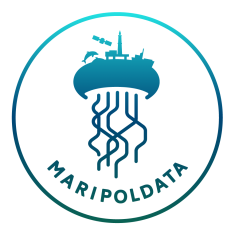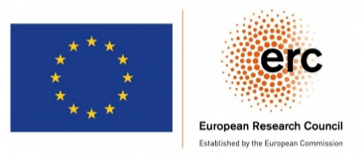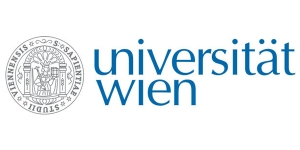Exploring Deep Sea Ecology and Ecosystems at the Oceanographic Institute, University of São Paulo (IOUSP)
Since 2018, the MARIPOLDATA research team has followed the BBNJ negotiations and provided extensive insights of the diplomatic practices, science-policy interactions and conflicts shaping the development of a new high seas biodiversity treaty (Tessnow-von Wysocki & Vadrot, 2020; Vadrot, 2020; Vadrot et al. 2022). In parallel, we studied the emerging scientific field of marine biodiversity to understand the state of what scientists knew and delve into the global inequalities of the scientific field, which were reappearing at the negotiation sites (Tolochko & Vadrot 2021a, 2021b). To close the gap between the scientific field and the negotiations though, MARIPOLDATA has taken a closer look at the national level to study marine biodiversity monitoring policies and practices from the perspective of deep-sea laboratories. With the aim to compare these perspectives, the laboratory life of laboratories adds a new key site to understand the structure of the politics of marine biodiversity research entangled between science and policy.
This MARIPOLDATA blog series shares insights from three laboratory ethnographies undertaken between October and December 2022 by three researchers of the ERC MARIPOLDATA team. These ethnographies will take our readers to the United States at Scripps Oceanography[1] at the University of California San Diego, France at the IFREMER[2] of Brest and Brazil at the Oceanographic Institute[3] of São Paulo. Our intention in sharing three singular experiences of laboratory ethnography is to provide a first outlook of how national knowledge infrastructures produce marine biodiversity knowledge.
The IOUSP in São Paulo
The Oceanographic Institute (Instituto Oceanográfico) at the University of São Paulo (USP) is a research and teaching institution focused on marine science. It was founded in 1948 with the goal of promoting the study of oceanography in Brazil and contributing to the development of the country through research and education. The Oceanographic Institute is located in the city of São Paulo. São Paulo is the largest city in Brazil and the capital of the state of São Paulo. It is located in the southeastern part of the country, and is known for its cultural, economic, and political importance. The city is the major economic and cultural center in Brazil and home to a diverse population and a vibrant culture. The IOUSP about a 1-2 hour drive from the Atlantic Ocean, and is affiliated with the University of São Paulo, one of the top universities in Latin America. It possesses more than 40 labs researching all aspects of oceanography, including biological, physical and chemical oceanography, marine geology, marine chemistry, and marine governance.
Over the years, the Oceanographic Institute has played a significant role in the development of marine science in Brazil, conducting research and providing education to students from a variety of disciplines. It has largely contributed to the understanding southern Atlantic Ocean – a previously understudied region – and its role in the earth’s climate and ecosystems but also partakes in missions to the Antarctic station, fulfilling Brazil’s research presence on the Antarctic continent. The institute possesses numerous research facilities and equipment, including a fleet of research vessels, and is home to a large number of researchers, professors, and students. In addition to its diverse research activities, the Oceanographic Institute has been pivotal for marine sciences in Brazil by offering undergraduate and graduate programs in marine science, as well as continuing education courses and workshops. Hence, it is also the Brazilian hub for the UN Decade of Ocean Science, for which a large mural painting was inaugurated during my research stay.

Professor Paulo Sumida inaugurates the new wall painting to celebrate the UN Decade of Ocean Science (Photo credits: Arne Langlet)
Deep Sea Ecology and Evolution Laboratory (LAMP)
The Deep Sea Ecology and Evolution Laboratory (Laboratório de Ecologia e Evolução de Mar Profundo – LAMP) is mainly focused on the deep-sea biodiversity assessment and on the mapping and description of deep-sea habitats and fauna. Further research interests include ecological and biogeochemical benthic processes in the continental margins of the Atlantic Ocean and Antarctica. The laboratory is led by Professor Paulo Sumida who himself was a master student at the IOUSP in 1994 before pursuing his PhD National Oceanography Centre, Southampton, UK and becoming a Post-Doctoral Fellow at Craig Smith Lab in the University of Hawaii at Manoa.
In November 2022 the laboratory had five ongoing projects that aimed at exploring different aspects of largely unknown ecosystems in the southern Atlantic ocean and the Antarctic. One of them is the DECODE project which seeks to understand the dynamics of deep-water coral ecosystems in the south-west Atlantic. The LAMP team used a combination of an ROV (with camera) Lander (with camera) and a sediment trap for this study. First they explored the area with an ROV and then installed the lander and the sediment trap for continuous monitoring. The sediment trap checked what kind of sediment (and tiny animals in it) was floating around and the lander shot videos in regular intervals to research which fauna visited the coral reef. In this way cold water corals and the potential impacts of oiling activities were monitored.
Providing high quality images of a largely unstudied area

Daniel Couto using the multi-use Leica magnifying glass to take a high-resolution picture of an Ophiuroidea sampled in the Santos Basin (Photo credits: Arne Langlet)
Much of the research at LAMP is aimed at the Santos Basin (Bacia de Santos) which is located in the EEZ of Brazil off the coast of the two large Brazilian cities Rio de Janeiro & Sao Paulo. Here, the research team is active in describing the coral ecosystems. As this part of the Atlantic Ocean remains largely undescribed, one of the main tasks of the research team is to produce images of the flora and fauna of ecosystems in the depth of 400-800 meters. Indeed, producing high quality imagines of rarely seen species was repeatedly highlighted as a “speciality” of the lab, with Sumida famously spending “up to 10 hours” to take the perfect picture of a new species during a cruise.
Collaborative taxonomy
“It is normal that every researcher discovers a new species in this area,” the doctoral student Bruno Henrique told me when I congratulated him to describing a new species in his PhD thesis. Indeed, also Bachelor student André Calloni described a new brittle start in his bachelor thesis which consists of a catalog of spectacular photographs of brittle stars. When asking about their methodology how to identify new species, I began to learn about the collaborative working method that characterizes this laboratory. I learned that when they discover something unknown, “here everyone speaks to everyone” so that everyone´s taxonomic knowledge is quickly aggregated to discover the species at hand – or if unknown – realize that it is indeed a new species. One could describe their method as “visual collaborative taxonomy” – as researchers identify species collaboratively and based on images.

André Calloni presenting the taxonomy of Ophiuroidea for his Bachelor thesis (Photo credits: Arne Langlet)
The condensed milk statistic & and strong collaboration with oil companies
Unfortunately, researchers in Brazil have faced significant funding cuts in recent years which has led to making them financially dependent on funding from private sources. The decrease of federal public funding for research in Brazil arguably reached its dramatic yet ironic peak in 2021 when a public spending statistic showed that the previous federal government spent more money on condensed milk than on financing research. Because extractive industries in Brazil are required by law to spent 1% of their yearly revenue on scientific or educative purposes, companies such as Petrobras have filled the spending gap in recent years. Petrobras – the company involved in the “Car Wash” scandal – a massive corruption scheme, in which executives and politicians had taken bribes in exchange for awarding contracts – is now a major cooperation partner as they not only provide funding for research projects such as the DECODE project but also provide crucial infrastructure for the researchers such as the necessary vessels to conduct sampling in the deep sea. This cooperation – as always – comes with advantages and disadvantages. One major disadvantage that researchers lamented is the strict data sharing policy that Petrobras requires from its scientifc project partners. This means that Brazilian researchers involved in Petrobras projects are not allowed to share data (particularly not outside of Brazil), which oftentimes prevents them from engaging in international research projects or cooperations.
Overall, I spent two insightful and fascinating weeks at the LAMP and also got to see the research station in Ubatuba.





